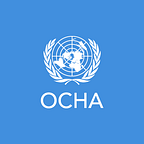Five ways cash is transforming crisis response for the better
By Sophie Tholstrup, Cash Adviser for UNOCHA in New York. This article originally appeared in Devex.
Over recent years, the scale-up of cash assistance in crisis response has changed the way humanitarians operate. Cash supports local markets and economic regeneration, empowers recipients and enables them to prioritize their needs. Cash can be faster and cheaper to deliver: studies show cash is 25 to 30 per cent more efficient than in-kind aid, while up to 70 per cent of in-kind aid ends up being re-sold. And up to 80 per cent of people in crises prefer cash to in-kind aid.
Cash also forces humanitarians to raise standards across the board. It shines a light on many of the flaws inherent in the humanitarian system, and pushes aid agencies to make changes so that they are fit for purpose. Many of the changes catalysed by cash responses, including linking up across better sectors and aligning response more closely to needs assessments, simply equate to better planning and programming.
Here OCHA outlines five ways that the increasing use of cash is improving humanitarian response:
1. Cash forces us to use the right tools in the right places at the right time
As humanitarian needs reach unprecedented levels and the gap between need and response grows, aid agencies must use the limited resources at their disposal as efficiently and effectively as possible. This includes rethinking response by using new tools and channels. But all too often, aid groups roll out the same pre-packaged solutions. By asking “where can we use cash?”, humanitarians force a discussion about the most effective tools across the response, leading to a more efficient allocation of resources.
For instance, in Nepal, following the 2015 earthquake, Shobha Shrestha, a Geography professor at the University of Kathmandu, turned up at the UN Office for the Coordination of Humanitarian Affairs office one morning to offer her time and expertise to help the relief effort. She produced a map overlaying the severity of food needs across the country with road access and the presence of functioning financial service providers. The map made it clear where airdrops should be focused (high need, no road access, no financial service providers); where road deliveries were most appropriate (high need, road access, no financial service providers); and where cash transfers could be used (high need, road access, functioning financial service providers).
2. Cash delivers relief when humanitarian access is limited
In 2016 and 2017, drought pushed 3.5 million people in Somalia into severe food insecurity. Humanitarian actors battled to avoid a repeat of 2011, when restricted access contributed to an inadequate response to famine conditions, leading to the deaths of 260,000 people. This time widespread insecurity meant that again, humanitarian convoys could not reach many areas. However, through 25 years of conflict, private traders have continued to be able to access almost every part of the country. Working with them, in 2017, aid agencies made cash transfers to 500,000 households (benefiting up to 3 million people), enabling recipients to buy lifesaving food and other goods, which played a critical role in helping to avert a famine.
3. Cash supports local markets
Increasing the use of cash means humanitarians must take market assessments more seriously, to understand the fragile local ecosystems through which they channel aid. When humanitarians don’t do these assessments, they can cause harm. For instance, following the floods in 2010 in Sindh, Pakistan, the distribution of food aid and the large-scale purchase of bamboo for shelter reconstruction had negative impacts on small- and medium-sized traders, slowing the pace of recovery. Market assessments should be part of every humanitarian response, everywhere, and wherever aid groups can respond through local markets, they should.
4. Cash helps us work better with Governments and the private sector
Humanitarians know they need to work better in support of Governments, but they do not know always know how to. From Ethiopia to Yemen to Turkey and beyond, humanitarians are increasingly delivering cash transfers through or alongside Governments’ social protection systems. Cash response also allows humanitarians to forge private sector partnerships that deliver better results. Private sector partners often have the best channels, access, knowledge and contacts to assist people, as well as the strongest data on where people are going and what they need.
5. Cash forces us to think like economists and place humanitarian response in the bigger picture
If we’re honest, as humanitarians, economics is rarely our strong suit, yet micro and macroeconomic dynamics in crisis-affected countries have a significant impact on needs and response. We need to better understand the impact of inflation, imports, remittance flows and exchange rates on the humanitarian situation, and, likewise, how humanitarian action impacts these dynamics.
In Yemen, while calculating how much a monthly cash pay-out should be for crisis-affected people, the Cash Working Group noticed a vast difference between the officially set exchange rate used by humanitarian groups, and the market exchange rate used by others. Humanitarian groups took this to the Government of Yemen, which subsequently officially floated the Yemeni currency. As a result, aid agencies could renegotiate the exchange rates available to them, stretching cash payments to more people and saving more than US$80 million, or 6 per cent of 2017 humanitarian funding for Yemen.
